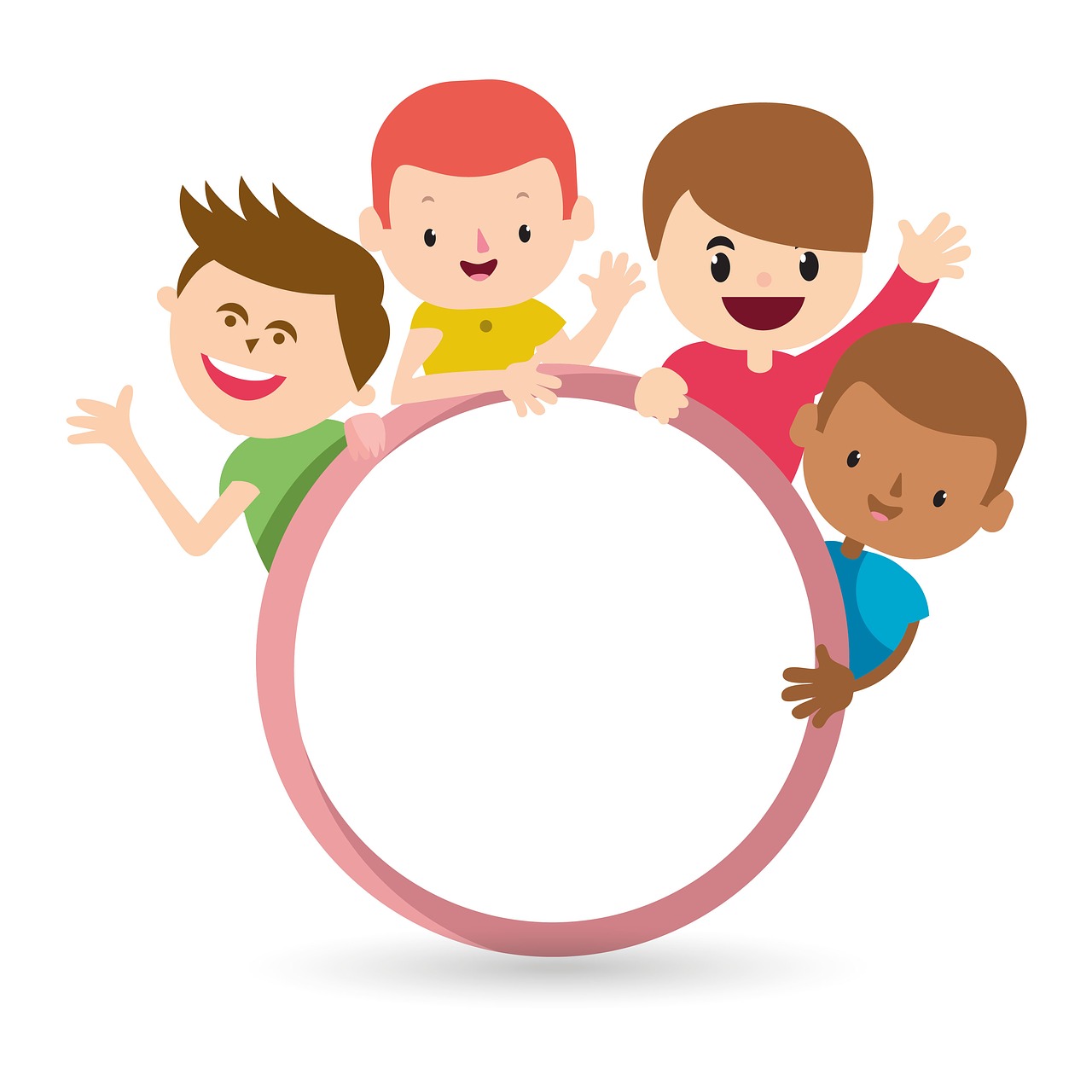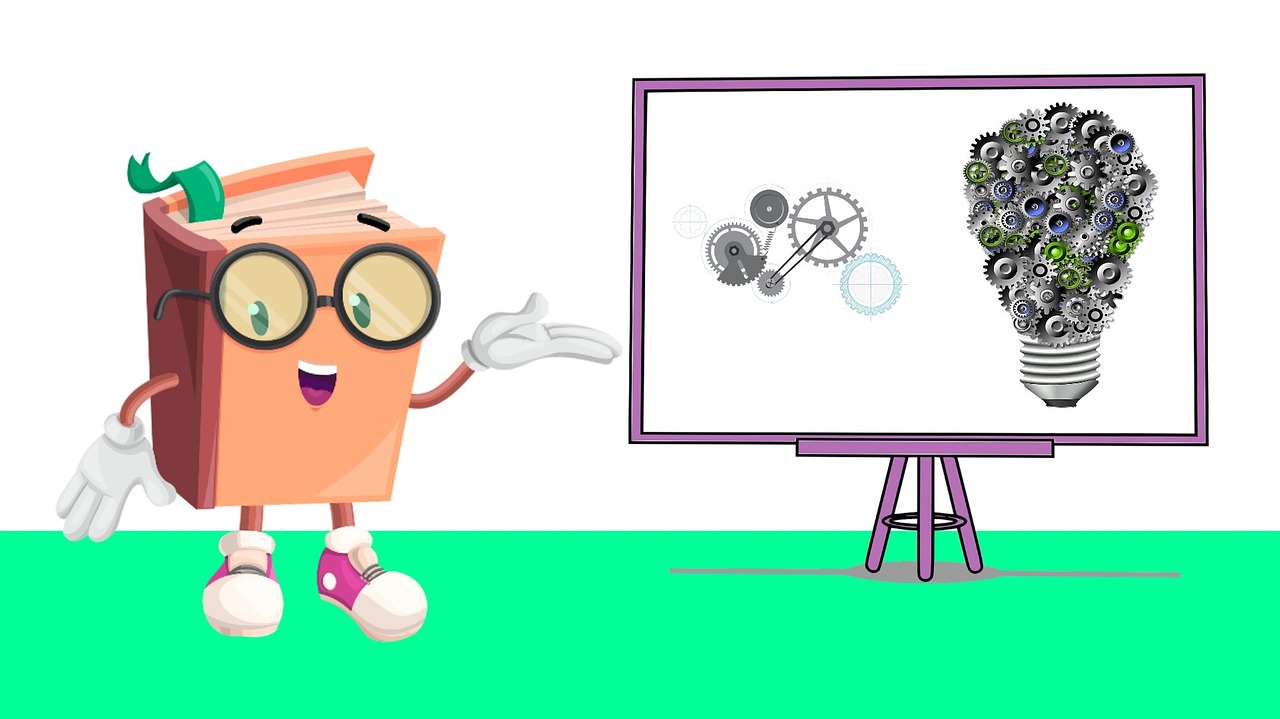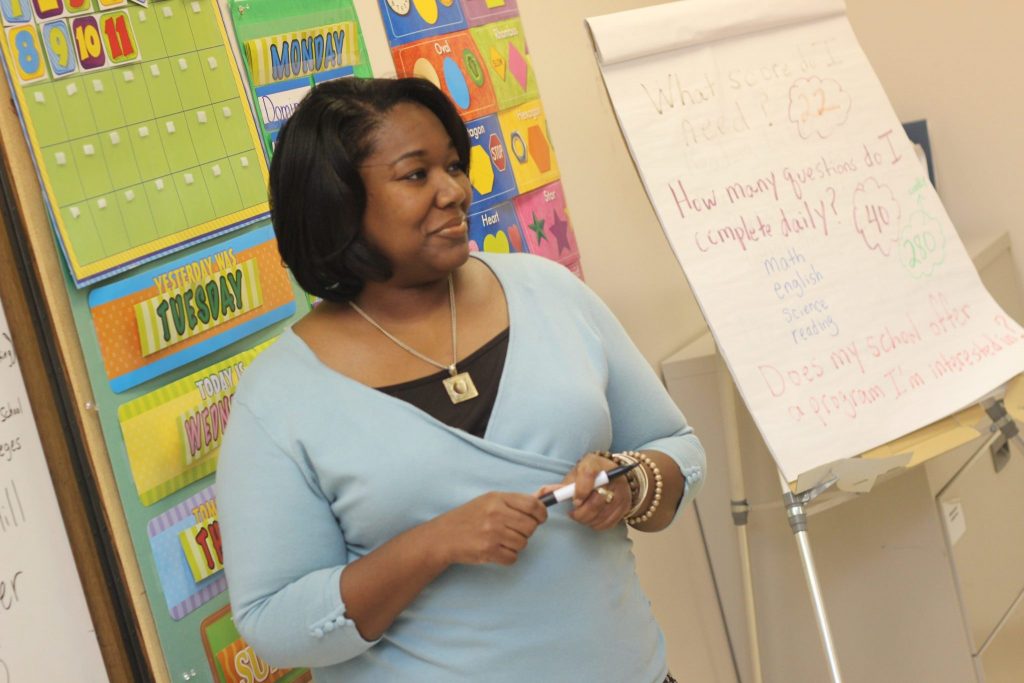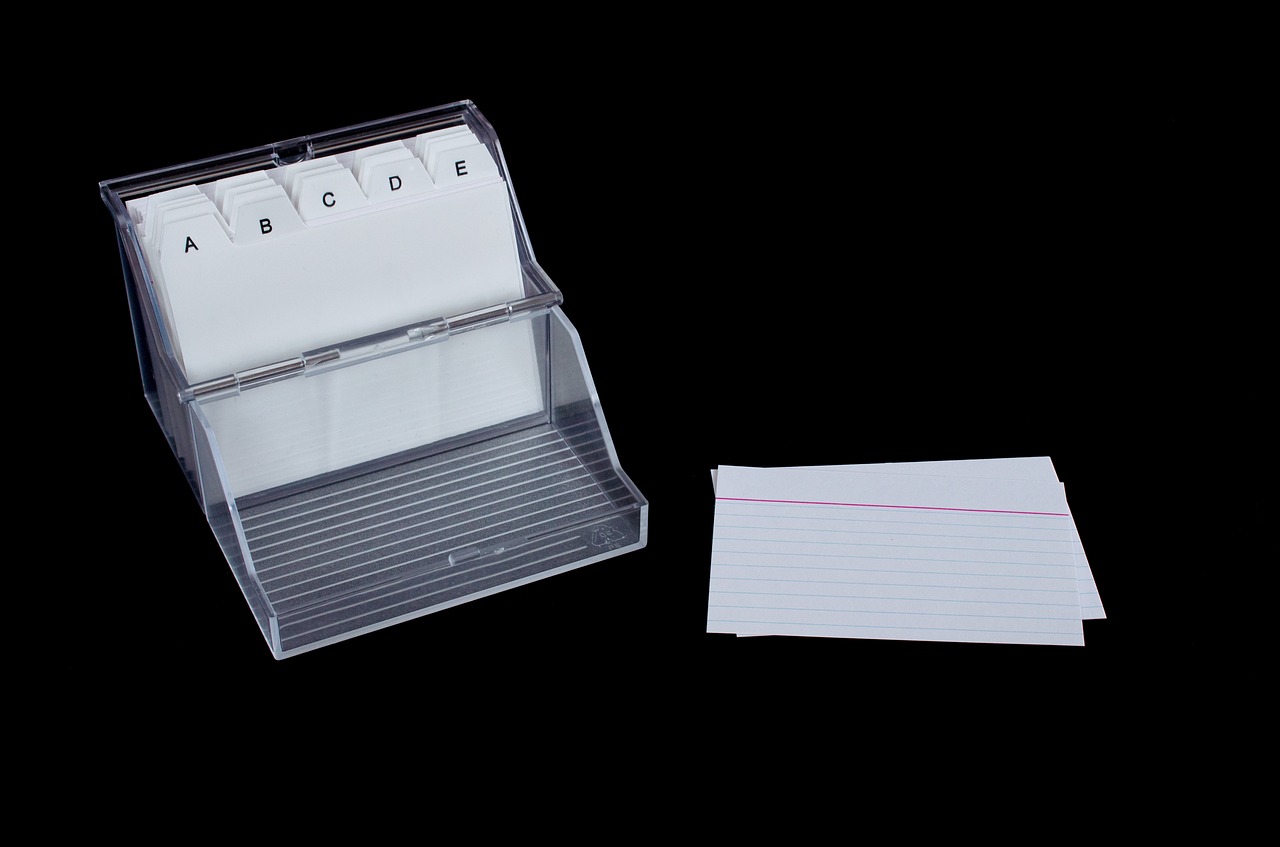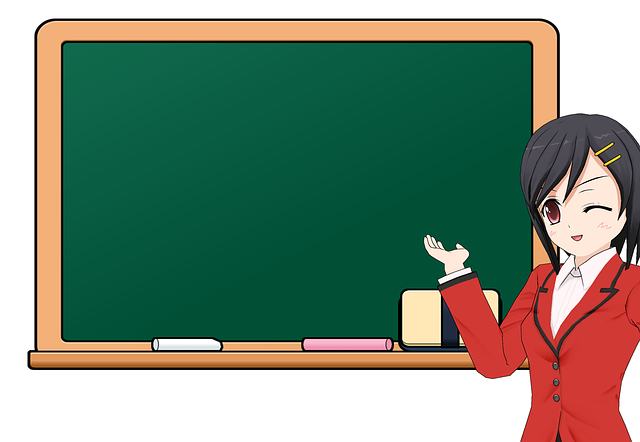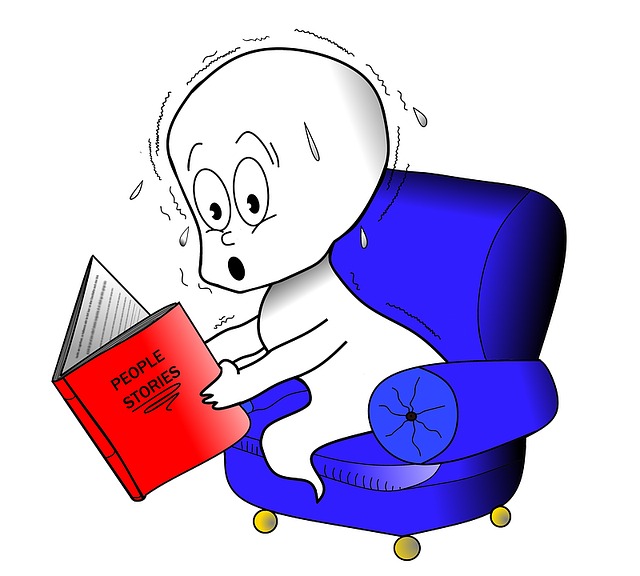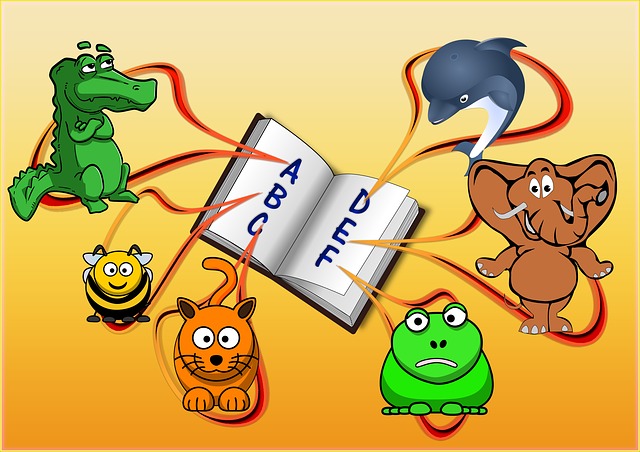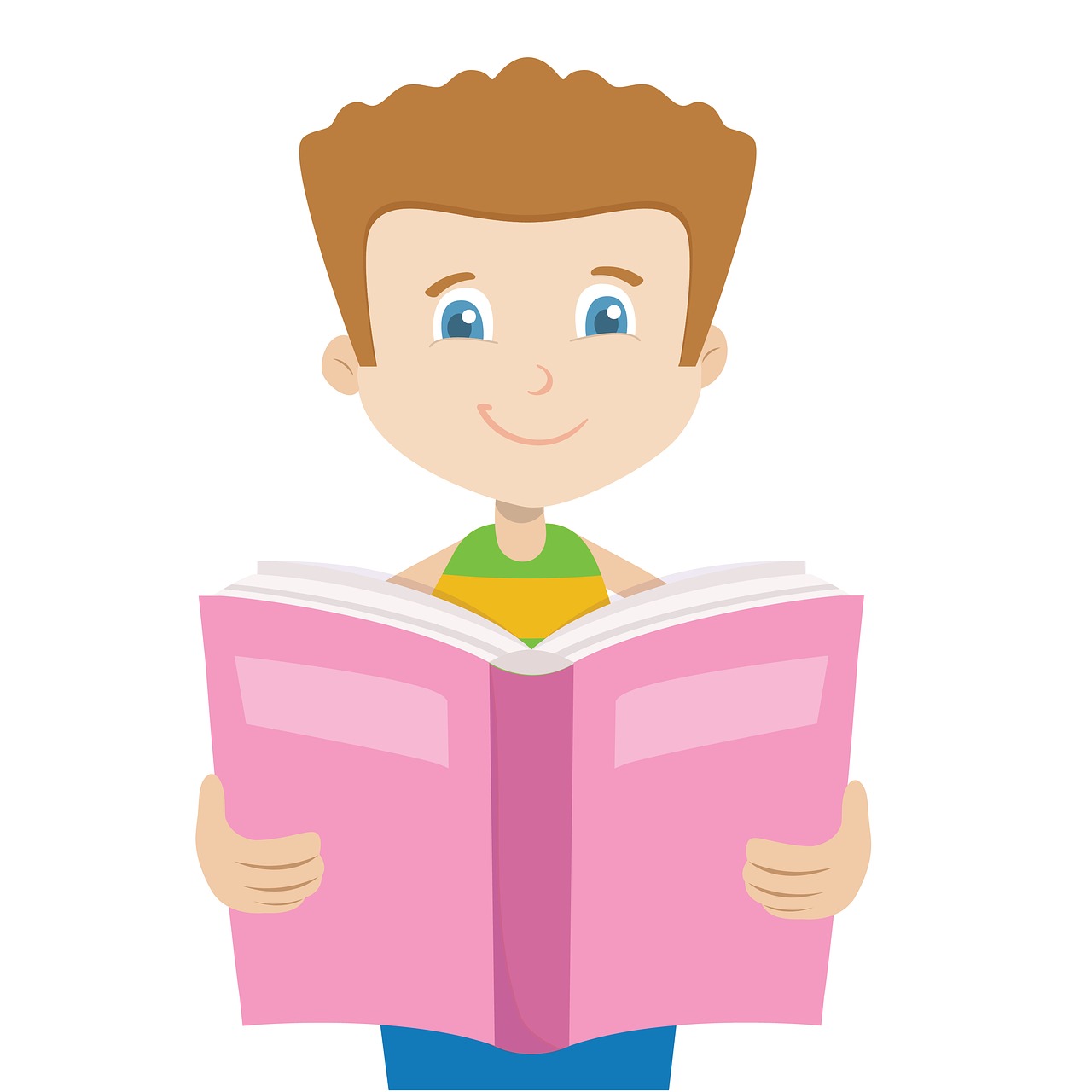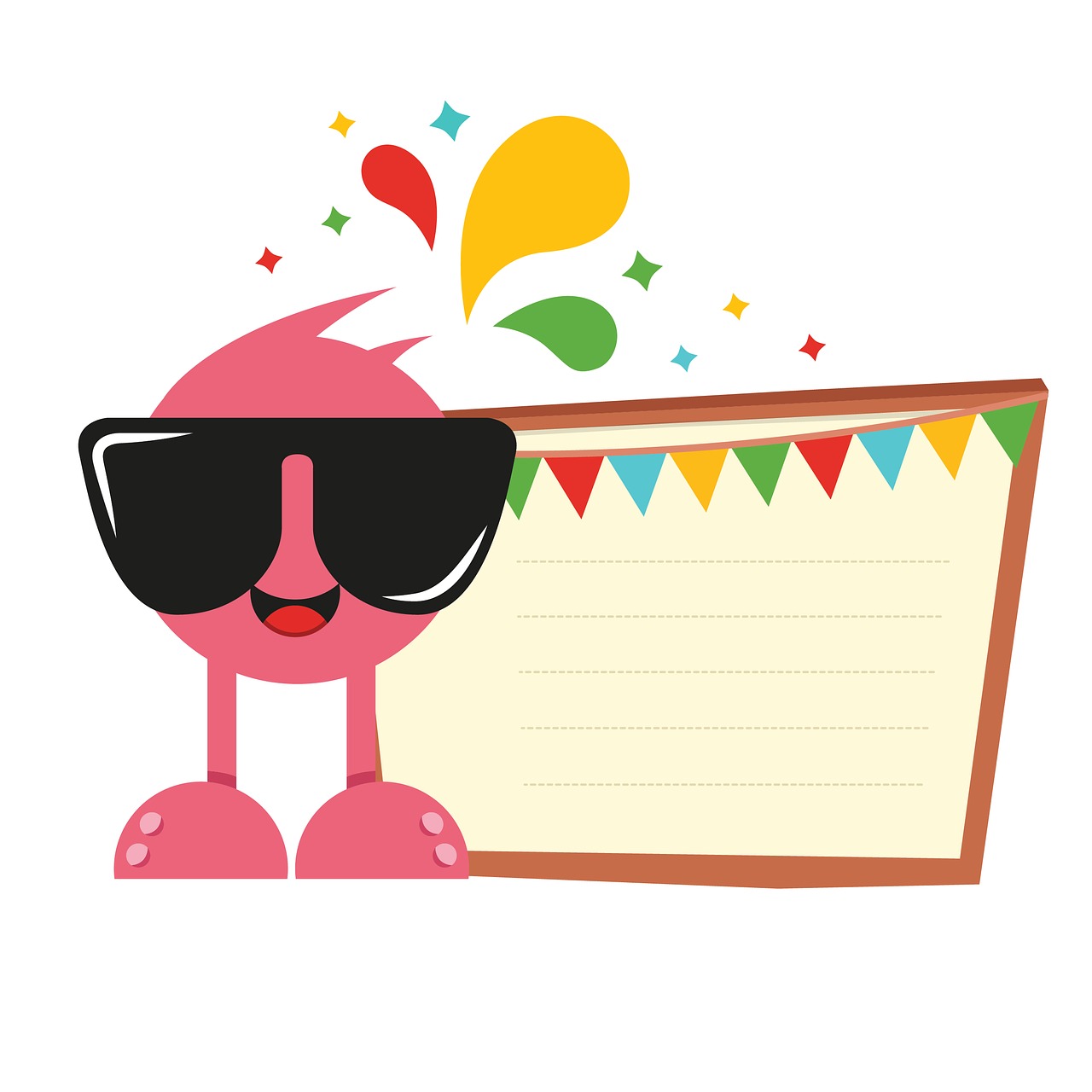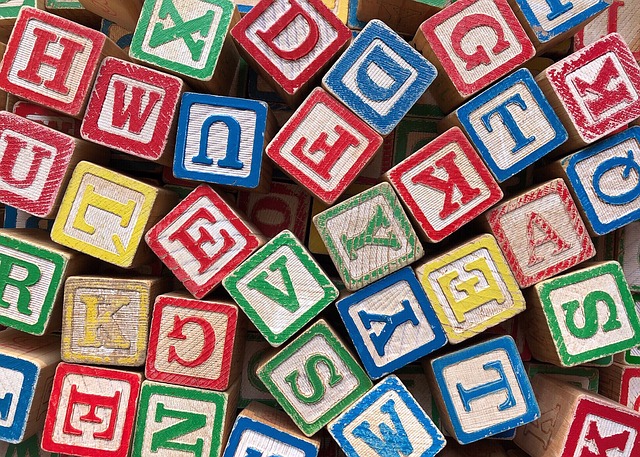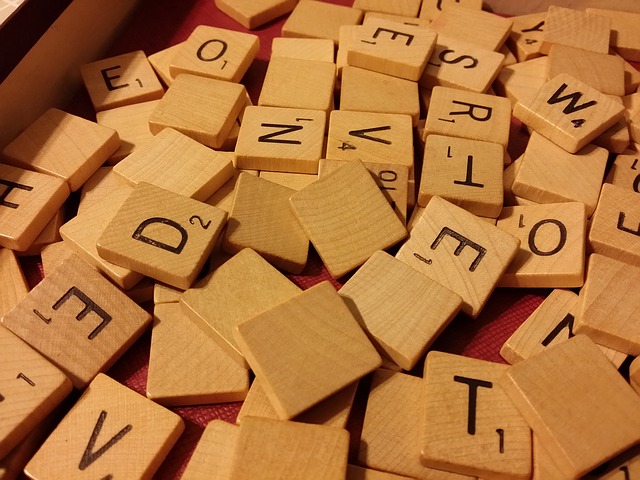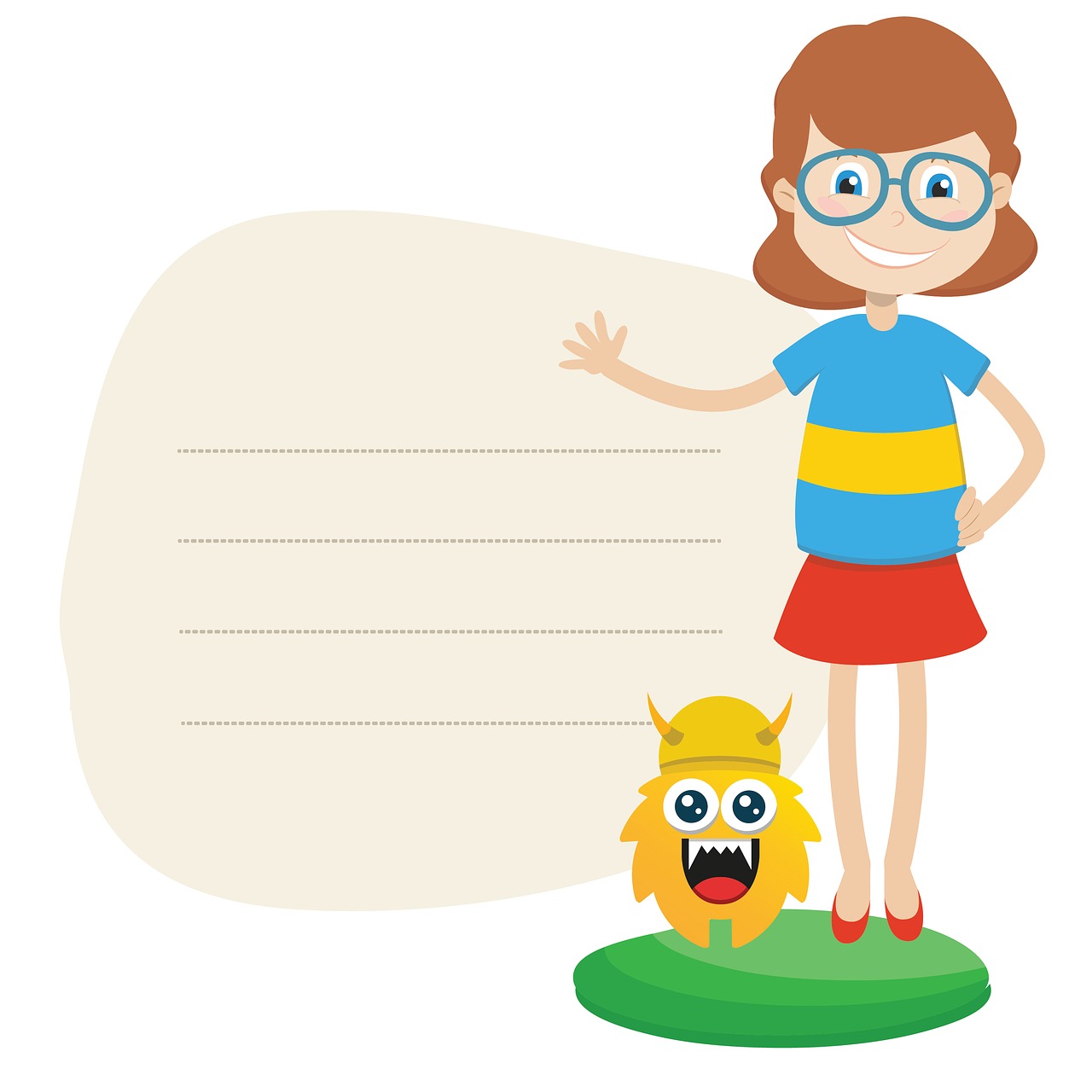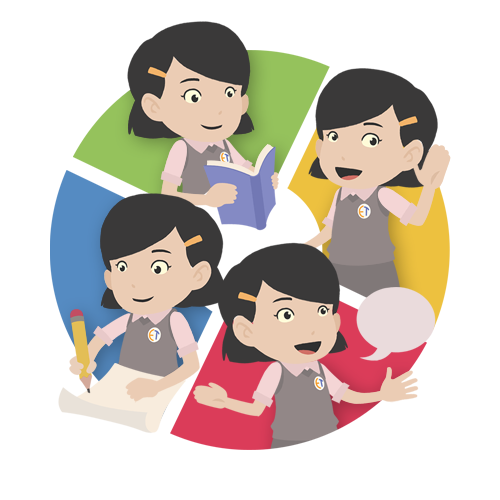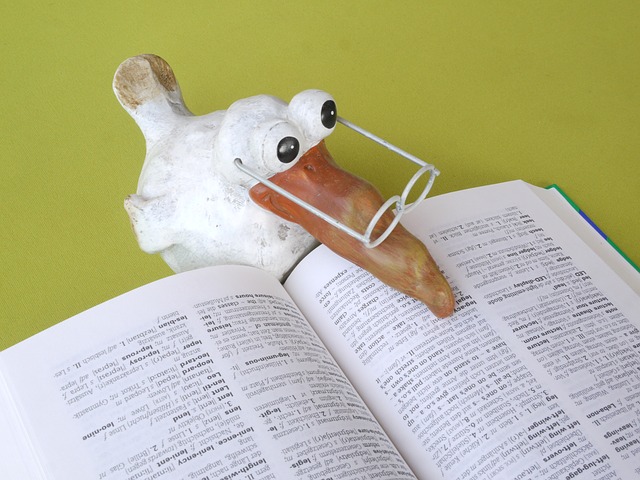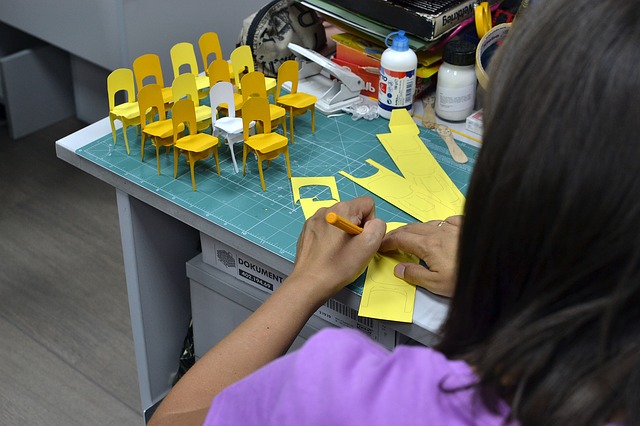If you take a closer look at the pronunciations of the words in the English language, you will notice that words sound different even though they have the same letters. For example, consider the words go, and dog, both of the words have the letter o in it. But the words sound very different. This is because the sound of the words has a lot to do with the phoneme of the letters and that is what we would be discussing today in details, the phonemic awareness and how you can improve it.
Let’s take a look at some of the rhymes, and you would get a clearer idea about the topic on hand –
“How now Brown Cow?”
Or,
“Moses Supposes His Toeses Are Roses”
Look at the words from both of the examples again. The words sound very similar, don’t they? This because they are from the same phonemic group.
Today, you would learn everything about phonemes and phonemic awareness. After you have gone through the whole guide, you will have a detailed idea about the following topics –
So, let’s get started, shall we?
What Are the Phonemes and Why Should You Learn About Them?
Phonemes have a very close connection to the pronunciations. While the pronunciation tells us about how a particular word should sound like, a phoneme determines the sound of a letter or a cluster of letters.
However, a letter can have different phonemes as it depends on how the letter is used in any word.
Do I sound confusing?
Let me help you with an example!
Think of the letters C and K. Although they are two different words, they can both represent the same /k/ sound depending on the word they are being used. For example, consider the word Cross and Kill. Here, both C and K letter sounds the same, like a /k/.
So, why does it happen?
To find the answer to that question, you will have to go to the basic of the origin of the languages. There are some languages what you can call a phonemic language.
It means that a language has individual letters to express all the sounds that the language has. Languages like Spanish, German, or Polish fall into this category. You will find individual letters that connect to all the sounds that these languages encompass.
On the other hand, there are languages that don’t have distinctive letters associated with different sounds. English will fall into this category.
There are 44 different sounds or phonemes in the English language, but there are only 26 letters to express these sounds.
That’s why a certain letter can have multiple sounds. Sometimes multiple letters are used to express a particular sound.
For example, the letter P typically express the sound /p/ and H expresses /h/ but often they can team together to express the /f/ sound.
Even the word phoneme sounds like fonim!
Read More: Inventive Spelling and Its Connection to Phonological Awareness
Phonemic Spelling: The Other Kind of Spelling!
So, I have already about how the word phoneme sounds like fonim. You must be wondering about why don’t we use that spelling instead. It would make things much simpler.
There are a lot of reasons for us to use the actual “phoneme” spelling. I will not go in details about that.
However, there is a different kind of spelling in English too. This spelling is used to identify the correct pronunciation of different words.
That different kind of spelling is called as the phonemic spelling.
By definition, phonemic spelling is the kind of spelling to identify the sound of a word.
Now let’s take you back to the example in hand again. The phonemic spelling of the word phoneme is /ˈfəʊniːm/.
I know what you are thinking – since when the English language has those weird-looking letters?!
If you remember, I have told you already that the English language has 44 sounds. There are actually 44 different symbols to express those sounds. These letters are called the phonemic letters or phonemic symbols.
I will get to that part later on this guide and will introduce you to all the different phonemic symbols.
Right now, all you need to know that the phonemic spelling is mandatory if you want to master the English language and have a sharp phonemic awareness.
If you want to have the perfect pronunciation and have a strong command over the speaking skill in English, you must possess the phonemic awareness. There is no way around.
Buckle up!
We would dig deep, very deep about the topic today!
Learning or Teaching Phonemic Awareness: It’s Not an Easy Task
Now that you have a brief idea about what phoneme and phonemic spelling is, let’s start talking about the elephant in the room – how can you teach or learn phonemic awareness.
There are three angles here to talk about the topic. You can be a –
- Parent trying to teach your children
- Teacher trying to teach your students or
- Student trying to learn the phonemic awareness
- Adults trying to learn English as a second language
I am some suggestions that help all of you who are suffering from the issue.
What Should a Parent Do While Teaching the Children?
Every child has a hard time in the beginning while learning about sounds and pronunciation as things seem too confusing.
You can identify some issues that would tell you that your children are having problems with the phonemes. Try looking for these issues in your children –
- Your child cannot think of the rhyming words that sound similar, like rat, bat, and cat.
- He or she seems uninterested in word games or rhyming games.
- Your children often pronounce the same words wrong, like, despite correcting multiple times, he or she misspeaks the word “right,” or “crayon.”
These are some common symptoms that signify that your children need help with the phonemes.
So, what can you do help them overcome the issues?
There are a lot of great ways that you can follow in this case.
Strategies that a Parent Can Follow
As a parent, the saying “Learning begins at home” should be your bible. There are so much you can do to help your child with their education. If you help them out with their studies, they would get a head start and will be more curious about learning a new thing. It also cultivates self-discovery for them.
So, without wasting any more words, lets help with those teaching strategies!
- Get yourself accustomed to the study materials your children will be learning in the school first. Try consulting with the school teachers about whether they would teach phonemic awareness at school or not.
- If they don’t teach these topics at school, you should make time at home teaching the basics. You can even suggest the teachers to include the topics to teach these basic things at school.
- If your children have passed the age when teachers teach these fundamental things, ask them whether they can make one-on-one sessions for your children.
- You should try reading books together. It would be even better if you try reading the rhyming books or poetries.
- You can try different apps or websites that focus on building vocabulary skill. While practicing the vocabulary enhancement skills, you should ask them to spell the words. If he or she makes any mistake, you can correct them. SpellQuiz can help you in this case, with a massive collection of spelling and vocabulary practice sessions.
Helpful Activities That Parents Can Follow
Here are some effective activities that would help them with the phonemic skill-building –
- Try designing quiz games on “think of as many words starting with the /ch/, /sh/ or /ph/.” It would help them brainstorm and make them discover more words with unique phonemes.
- Try working on creating new tongue twisters, it doesn’t have to have any meaning, just combine words that have similar sounds. For example, “Nobody was nice to Nancy’s neighbor Nick.”
- You can try working on the rhyming words. Just like creating tongue twisters, you can make rhymes. You can ask your child to find rhyming words. Ask him/her to find as many words rhyming with bot. He or she will be trying finding words like cot, dot, hot, rot, etc.
What Should a Teacher Do While Teaching the Students?
A teacher would face more problems while teaching the phonemes.
Why?
A parent will have to teach a maximum of two children at a time, but the teacher has to teach the whole class. As every child learns at a different speed, the teacher should make his or her lessons more personalized.
Still, the teacher can try giving tasks to a batch and see how the progress of each individual. While teaching a teacher might notice the following issues among the student. So, he or she should be prepared to face the following issues –
- The students might not be able to combine the sounds together to construct a complete word. For example, it is only normal for a student to combine phonemes like /p/, /i/, and /ck/ together to make a complete word like pick.
- If you assign the task of filling the blanks with proper phoneme to make new words, some students will fail to do so. For example, if you ask your students to substitute the /f/ in fate to /m/ to build mate, some students will fail.
- The most common problem among the kids is to figure out the number of syllables in a word. For example, it’s not very easy for the young child to identify the number of syllables in complicated words like particular.
There could be a number of different other issues that a student might face while learning the phonemes. The ones that I have discussed are just some of the common issues.
I think you now have an idea about the problems you could be facing in the classroom. So, you have to be prepared and be creative to solve the issues.
Still, I have found out some creative solutions that you can apply in different situations. Check them out.
Strategies That Teachers Can Follow in the Classroom
The concept of phonemes is quite hard for a lot of children to grasp. Sadly, there is no particular training that can help the teachers in these situations.
However, I really hope that the following solutions might help you. Just make sure you are creative if you get stuck in a unique problem with any student.
- Provide a list of all the phoneme to the class on the first day. It would be helpful for the students if they see the chart over and over again.
- Try to follow the same idea you follow while teaching the regular alphabet to your students. Think of the phonemic alphabet to be a different alphabet.
- Always teach your students with examples. Examples help the student to understand the use cases. It would make the learning process more practical.
- Start your lessons with extremely easy examples first so that things become easy. It would be better if you can show all the phonemic letters in use in the mono-syllable words.
- You should give one-on-one lessons to the students who lag behind among the peer.
- Identify the exact phonemes that students find the hardest and try giving as many examples as possible for those phonemes.
- Try including more books on the topic in the syllabus. The more the students would read, the faster they can learn about them.
- Rather than giving the same lesson to the whole batch, you can try dividing them into smaller groups with similar learning speed. It would make things easier for you.
- Rhymes are the best study material for young children for learning the phonemes. Let them enjoy the rhymes, and they wouldn’t even notice that they are practicing the phonemes.
- Lastly, be patient and don’t rush, it would make them afraid of the lessons.
Try to Understand a Kid’s Perspective: They Might Not Like Learning Phonemes!
I know how learning phonemes feels like. No, I wasn’t fan of it either, I always hated it! I always nagged to my mom and often hid inside the closet so that I don’t have to read the book on phonemes.
So, if your child hates it too, it’s only normal for them!
A kid might say these things often if they are having problems with phonemes –
- “I don’t know how pit and lit sound the same, they are not the same!”
- “I hate rhyming games!”
- “There is no word that sounds like flush!”
- “I don’t know how many syllables are in tomato!”
- “I have a tummy ache! (obviously, a lie) I don’t want to read now.”
Do your kids say almost the same kind of things whenever you are trying to teach them the phonemic awareness?
You shouldn’t feel frustrated as almost all the kids at some point show these symptoms. You will have to be patient and try to figure out some ideas that don’t feel like you were teaching them phonemes.
The key is to teach them phonemes in a way so that they don’t feel like being pressured or “being taught.”
Strategies That the New Learners Can Adopt
I have figured out some simple solutions that can help a child while learning the phonemes. These strategies can also be applied to the new learners, I am talking about the ESL learners in particular in this case.
The first thing that a leaner should try is to admit that they are learning a new thing, and it would take some time to master it. This fact is true for anything, not just the phonemes.
The second suggestion would be making a personal list of all the issues a learner is facing. No matter how many strategies I give you, it won’t help you much. I have said this countless times, everyone learns at a different speed, and everyone faces different and unique issue while learning.
So, you should make a list of the issues and start working on those particular issues.
The third tip only for ESL learners. As you are new to learning English, you can compare the rules of your mother tongue to the rules of the English language. Every language is unique and different from the other one, but there can be a lot of rules that are common.
Helpful Tips for New Learners
Also, you can try the following tips, they could be helpful for you –
- Try to be willing to work with your teacher. The moment you and your teacher co-operate, things change dramatically, in a positive way.
- Be patient, don’t give yourself a hard time.
- Be open to reading a lot, the more you read, the better you would become.
- Watch movies or TV series, try to learn pronunciation from the dialogues.
- Sing your favorite English songs out loud. If you are shy, you can always try singing in the bathroom while taking a shower. Surely, you will make a lot of mistakes, but you will learn also.
- While you are listening to someone, pay attention to individual words. Concentrate on how the words sound.
It’s a good idea to go through the sight words list before jumping into tougher learning activities.
The Psychology of Learning
Learning a new thing can be stressful and time-consuming. However, you should never stop trying.
If you are having a hard time, tell yourself this, “I can do it, I will do it, and no one can stop it!”
This is a powerful auto-suggestion, and it would help you stay motivated. Moreover, your subconscious mind would try even harder to help you achieve your goals.
This psychological technique has helped me a lot achieving different issues, especially in those stressful engineering exam nights!
There is no doubt that phonemic awareness plays a great role in mastering the English language, especially speaking skills.
Different researchers have found out that phonemic awareness plays a strong role in the overall language learning process. With better phonemic awareness, a learner can master other aspects of English very quickly and easily. Consider the phonemes to be the base that you would build the whole English language learning skills on.
Tips for the Teachers to be a Rockstar Among the Kids
Teaching Phonemes Is Like Gardening!
When you are planning to do gardening, there are some steps that you will have to follow for a better harvest and healthier plants. Let’s call them the pre-requisites of gardening.
Why am talking about gardening all on a sudden?
Believe it or not, teaching Phonemes Is Like Gardening!
There are some steps that you should follow before you start teaching phonemes too. If your students go through those steps before starting the actual phoneme learning process, they will have a stronger base and will certainly master the skill quickly.
Let’s call them the “helpful considerations!”
The Lessons Should be Short!
Students, especially children, have a shorter attention span. The span becomes even shorter when they are aware of the fact that they are studying.
Your lessons shouldn’t be longer than 15 minutes.
A young student can’t have a solid attention span longer than that period. This time can be variable but should be longer that it.
Plan the Lessons Early Share It with Your Students
If the students know what they would be learning on a particular lesson beforehand, they can connect to the lessons better. You can even share the study materials prior to the lesson too.
It would make them prepared for the lessons. The preparedness makes the lessons easier to grasp.
Moreover, the students will feel connected, and it also gives a feeling of “being in a team.”
Use Stories or Themes
If you can manage to incorporate a theme to your lessons, students would enjoy your lessons a lot.
For example, if you can teach using stories of Cinderella or Peter Pan and somehow teach about phonemes, students would pay more attention.
This technique would make the teaching process more spontaneous and light-hearted.
Read Together, Learn Together!
Now, I will talk about a common yet often overlooked teaching technique – shared reading. Shared reading is a method where the teacher and the student read a text together.
What will have to do?
You and all your students will have the text (a book) in hand. Then you will read a sentence from the text. Then, your students will read the same text after you.
It might not seem like a lot, but it helps in a unique way.
If a student doesn’t know the pronunciation of a particular word, he or she will learn it instantly from you. Then, he or she would read it aloud along with the peer.
They will learn a lot of new words in this way too.
Revise Again and Again!
It is nothing but normal for a student to forget a previous lesson. So, you will have to make them go through the previous lessons.
As I have said earlier, your lessons will not be longer than 15 minutes. You can teach new lessons first within the 15 minutes, then, spend about 10 minutes discussing a previous lesson.
But you should mix things up. Rather than discussing the immediate previous lesson, talk about a random lesson that you have already taught them.
It would make the base stronger.
Teach Two-Part Words Before Teaching Syllables
When you are trying to teach the phonemes to the students, you have to teach them about syllables sooner or later. It’s a mandatory section of the phoneme teaching.
However, young children often go through a hard time identifying syllables in a word.
So, how can you make the process easier?
The trick is to teach them two-part words first. When two individual words combine together to make a new word, the new word is called a two-part word.
For example, cowboy or seashore are some great and simple examples of two-part words.
Ask your students, what comes to their mind when they hear the word cowboy or seashore?
Children can easily segment these words in two sections, like, breaking cowboy to cow and boy. They will not even know, but they would be getting lessons on syllables.
Once, they master segmenting the two-part words, you can go move to the three-part words.
Finding the Odd Word Out?
To help the students with rhyming skills, you can play another game. The game will help them improve their identification skill.
First, give them a primary word. Then, give them two to three options and ask them which of the words sound similar to the primary word.
For example, draw a cat on the blackboard. The image would raise attention among the students. Here, the primary word is cat.
Now, give them three options – hat, sun, and run. Then, ask them which of three words sound similar to cat.
This technique will help them with word rhyming skill.
Guidelines Shared by Linguistic Experts
The Tips and suggestions that I have shared in the previous section are some of the ideas that I have found useful over time. However, linguistic experts have worked hard to make the phoneme teaching methods more fruitful.
It’s a step-by-step guideline that is designed to help you teach a particular phoneme learning task.
Suppose you are planning to teach a particular lesson to your class. To make the lesson more effective, you can follow these suggested techniques –
- Teach them phonemic spelling instead of the regular spelling. Each of the sounds in a word can be represented by more than one regular letters. For example, if you are teaching them the sound of cheese, you should teach them by writing /ch/-/ee/-/z/. In this way, your students will know the number of sounds there is in a particular word.
- Use force while teaching words with continuant sounds (Mmmm, Ssss, Rrrrr, etc.). These sounds are easy to pick up and identify. So, if you put extra force, your students can pick the correct sound of the word easily. For example, while teaching words like ring, use extra force and pronounce it like Rrrring.
- Teach your students a simple trick – the initial and the finishing sounds are easy to identify while the middle part is quite tricky to find.
- Teach them some common combinations that are used to construct a word. The Consonant-Vowel (CV) pattern comes first, then comes the Vowel-Consonant (VC) pattern, the Consonant-Vowel-Consonant (CVC) pattern comes in the last place.
Onset and Rimes: The Best Tool for Teaching Phonemic Awareness
Over the years, teachers have used a few effective tools that help a learner to learn the basic of phonemic awareness.
As you know, there are a lot of patterns among the English words. If you can teach them the common patterns, your students will learn about all the other words having the same pattern automatically.
It would be much faster and methodological to teach the patterns than teaching all the words individually.
As we are on the topic, I should tell you about the most effective tool for identifying patterns and teaching phonemes.
The tool is often called the Onset and Rimes method. Some even call it Onset and Rhymes.
So, what is the fundamental idea behind this tool?
Onset refers to the initial or the first part of the phonological structure of a word. On the other hand, Rime refers to the common string of letters. Often, the Rime section gives the word a pattern.
Sounds confusing?
Take a look at this example. Let’s consider the word band. In this word, the onset part is /b/ and the rime part is -and.
Now, let’s talk about the pattern. As you can see, the rime part can be found in a lot of words. For example, hand, land, rand, sand, etc. have the same rime part in them.
Teaching this technique would be very effective as students have the idea of onset and rimes or syllables way before having a concrete knowledge of phonemic awareness.
Now, I am going to tell you how you teach the onset and rime to your students.
Start with Wordplay
Before you begin your lessons on onset and rimes, you should intrigue your students with some wordplay. Rather than teaching them different rules, your lessons can be much more playful if you start with rhymes.
Why should you do it?
Rhymes are always catchy and get much more exposure. Moreover, the children will be happier if you can make the lessons more playful.
Don’t you believe me?
Okay, just start your next lesson with this phrase – there is a wocket in my pocket! If your students are children, you will see them giggling and laughing just hearing the word wocket!
This is a nifty trick as you can instantly capture their attention as they are hearing something is funny in a general sense.
However, you would be planting a seed for something bigger, you just have taught them an example of onset and rimes. Wocket and pocket have the same phonetic pattern.
The Books That Can Help
The example that I just used in the last section is actually the name of a children’s book. The famous book There is a Wocket in My Pocket is the creation of the famous writer Dr. Seuss.
As you have already made them curious with the catchy name, you can easily make them read the book. This book is the perfect study material for the children to develop the skill of onset and rimes.
Why is that?
The book is about imaginary creatures that sound almost like a real-life object. Some of the names of the imaginary creatures are – Zamp in the lamp, Zuk in my book.
I don’t think I have to explain more on this topic.
I can think of another great book that you can give your students to read. It’s called Faint Frogs Feeling Feverish. As you can guess, the book is full of fascinating tongue twisters.
Tongue twisters are extremely helpful for the kids who are trying to learn to master phonemic awareness.
There is another great book full of smart tongue twisters called Terrifically Tantalizing Tongue Twisters.
Here is a small list of the books that you try in your class –
- Sheep on a Ship
- Moses Supposes His Toeses Are Roses
- Down by the Bay
Using the Books in the Classroom
Okay, so you now know some of the names of the books that you can bring in your classroom for your students.
The question is, how can you make the best of these book for teaching phonemes?
I have an idea that can help you in this case. Here are some tips that you might find helpful –
- Rather than reading once, re-read the stories a few times.
- After each reading session, discuss on how the authors have played with the words and language.
- Ask your students to predict the sound of the words.
- Ask them if they can identify any pattern among different words.
- Finally, ask them if they can think other words that have the same pattern.
Introducing Word Families
If you have followed the previous tips, this step would be quite easy.
Which tips am I talking about?
– Creating the list of similar sounding words that have the same patterns in it.
By creating the list, you are actually helping them building a word family chart.
Colin Hawkins and Jacqui Hawkins are the masterminds behind this strategy. Their children Tog the Bog is a great book that can help a child with onset and rimes. This book teaches the children to create a word family chart.
The creation of different word family chart can be perfect homework or assignments for the students.
Direct Intervention: Your Last Bullet in the Pistol!
Till now, the strategies that I have shared on onset and rimes should make the student intrigued enough to practice all by themselves.
However, not every child will have the same capability or creativity. You cannot push them too hard ever, it would kill the curiosity and make them doubt themselves and their capability.
That’s the last thing a teacher should do!
To help out the students who are lagging behind, you should go for the direct intervention method.
This method as simple as the name of the method – you will tell the answer directly rather than making finding the answer all by themselves.
If you help them a few times by giving out the answer directly, they might catch up with you shortly and find out the pattern eventually.
Games Are Always Helpful!
As a teacher, you already know that games are the perfect tool to teach anything to the children. To make the lessons more joyous, you should introduce some games too.
However, you should choose the games that would help the children develop phonemic awareness.
There is one game that comes to my mind, particularly now – “The Happy Face, Sad Face” game. The rule is quite simple, you will speak out two words. If they rhyme, you will ask your student to make a happy face. If not, the response would be a sad face.
This game works like magic for teaching the students.
There is another version of the same game that is also interesting. Here, the teacher would show three pictures of different objects. The students will pick the pictures with object names that rhyme together.
There are a lot of other games that you can introduce to your class. I would discuss them later in this article.
6 Mind Blowing Phonemic Awareness Development Methods Developed by Scholars
Over the years, many scholars and experts have come up with simple methods that can help children with phonemic awareness.
I have already shared a few techniques by linguistic experts. But the methods that I would discuss right now are mostly from the scholarly articles. So, you can call these methods effective and dependable.
Both the teachers and the parents can follow these methods to educate children.
Take your time the understand the methods and think how you can implement these methods in the strategies that you have been following already.
It’s NOT mandatory to use all of the methods but use the ones that you can match with your strategies.
Method 1: Recognizing the Isolated Sounds
The first thing that you would teach the children is that most of the words are made up of multiple sounds. So, each word is just a collection of sounds.
This is pretty basic, right?
So, teach this fundamental fact first to the children. Lewkowicz, the author of the scholarly article, emphasizes this information very much in his article.
According to him, “Children should be familiarized with speech sounds in isolation before they attempt to detect sounds within words.”
The next idea is to help the children connecting an object, an activity, or an animal to a particular sound. So, whenever they hear a sound, they can imagine the object associated with that sound.
For example, you can make a connection between the sound /s/ with the hissing sound of a snake-like Ssssss.
Once, you help the children connecting the sound to anything, you are actually creating a sound personality. In this case, snake’s hiss is the sound personality of the sound /s/.
Similarly, a crowing rooster goes with /r/, a buzzing bee goes with /z/, or silence goes with /sh/.
As a teacher, your job will be to create individual sound identities for all the 44 sounds in the phonemic alphabet. However, the sound identity can be different for each student.
You should let the students choose his or her preferred sound identities.
After the students have a complete grasp over the sounds, you should teach them to identify and individual sounds that make a word.
Now, that’s a nifty method, isn’t it?
Method 2: Counting
To find out the actual pronunciation of a particular word, you will have to identify the individual phonemes the word has. However, finding out the individual phonemes is not that much of an easy job.
The process would be even harder for a young child.
So, what’s the solution here?
Well, the trick is to identify the words and the syllables first as they are more prominent and easily identifiable. So, in that way, the first step of the phoneme synthesis is to count and individualize the letters in a word.
However, the letter counting process should be auditory dependent, that means the child will not see the actual spelling, and he or she will try to guess the spelling just by hearing the sound of the word.
After hearing the pronunciation of the word, he or she would break the sound into syllables based on guessing. Only after that, the child can say how many phonemes a particular word might have.
Let me clear it with an example.
Let’s say the word that the child would try to analyze is window. In the first step, someone will speak out the word. Secondly, the child will try to break the word into two syllables win and dow. Finally, he or she would try to find the count the phonemic letters (/ˈwɪn/ and /dəʊ/) and actual pronunciation of window.
That’s how a child can count and identify the phonemes in a word.
Method 3: Sound Synthesis
Sound synthesis can be considered as one of the fundamental reading skills that a person has to have to read properly.
It is often considered as one of the easiest steps, too when it comes to mastering phonemic awareness. The basic idea behind this trick is to blend two or more sounds together to come up with the actual sound of the word.
How can a teacher help a student with it?
Let’s say the word to be pronounced is night. So, the teacher would say the word starts with the /n/ sound and finishes with the /ʌɪt/ (ight) sound.
The task of the student would be to blend the sounds together and come up with the complete sound /nʌɪt/ (night).
So, you can summarize the task as following –
- Find the initial sound
- Identify the final sound
- Blend the two sounds together
But there is more to the task actually. As you can see, the task is rather boring and often complex. Hallie Kay Yopp, the developer of this method, came up with another idea to make the activity fun for the kids.
She suggested that the activity can be performed with jingles and even with puppet shows! These two methods certainly light up the mood in the classrooms.
Yopp even suggested using the famous children song, “If You’re Happy and You Know It, Clap Your Hands.”
However, in this case, the lyrics are a bit different as the student are trying to find out the sound of a word. So, the changed lyrics is something like this –
If you think you know this word, shout it out!
If you think you know this word, shout it out!
Then tell me what you’ve heard,
If you think you know this word, shout it out!
Method 4: The Matching or Sound to Word Matching
This method is also a simple yet effective one for the beginners and the kids. Like a lot of other methods, it tries to help a person with sound segmentation.
The fundamental idea of this method is to match the correct sound to the word as the name suggests.
For example, if a teacher is trying to teach the sound of the dog, he or she would show a picture of a dog.
Then, she would ask a couple of questions, like –
“Is this a Cccc-og, a Dddd-og, or a Llll-og?”
Then, the students would reply with the correct answer.
The teacher can even try mixing things up. For example, the teacher would simply ask the students, ”Is there a /d/ in dog?” or “Which of the sound /c/, /d/, or /l/ matches with dog?”
As I have said, the key idea is to match a sound with a word – that’s it!
Yopp is also the inventor of this method, and she insisted using tunes of popular children’s song like – Old McDonald had a farm in this case.
You must say the idea of using popular tunes will certainly have a positive impact on the children.
Method 5: Sound Identification and Positioning
This method suggests that a word or the sound of a word should have three parts – initial, medial, and final.
A student will hear a word, divide the sounds into the thee parts, and then position the parts into the three slots.
You could even tell your students to think of the sound positions to be parts of a train. Like this –
- Initial part – The engine
- Medial part – The passenger cars
- Final part – The carriage
Again, let me clarify with an example.
Consider the word pig. The first or the initial sound is /p/, the medial part is /ɪ/, and the final part is /g/. When you combine all the three parts together, you will get /pɪg/.
However, there can be different kinds of combinations other than this formation –
- Consonant-Vowel-Consonant (CVC) formation
- Consonant-Vowel (CV) formation
- Vowel-Consonant (VC) formation
But no matter the formation is, the basic idea is simple – identifying the sounds, assigning correct sound positions, and combining the sounds to construct the overall sound.
Method 6: Sound Segmentation
The last method, sound segmentation, is often considered as toughest of all the simple methods for the children. This method is almost like the sound identification and sound positioning.
However, there is a slight difference. The methodology is like this –
- Listen to the sound of the word,
- Isolate the phonemes in the word
- Pronounce the separate phonemes according to the order
- Combine or blend individual phonemes together to come up with the sound of the word.
Some linguistic experts have said this method to be an advanced method and should to taught to the students who have already mastered the basic methods. But this strategy works great for students practicing spelling bee words.
Observations
Phonetic spelling looks tricky when you first look at it.
Don’t get discouraged!
There is a lot to absorb, and take in, but the end result is well worth it. Your child will have a foundation to build vocabulary on that will open the doors to learning.
Spell like a champ!
Games That Can Help You or Your Child with Phonemes
Who doesn’t like to play games?
All the better when that game encourages learning and mastery of a concept.
A few years back, I was talking to a friend that dealt with computer programming and development. We were talking about the fact that younger people seem to learn how to use new devices faster than older people.
After all, you would think with more world experience and maturity, an older person would grasp concepts faster.
His answer?
Games.
He argued that a younger person grasps how to use newer technologies simply because they are learning it in a fun and entertaining way. Older people are using technology for more boring things.
In other words, there is no excitement in learning how to master the technology.
The theory can be applied to almost any learning setting.
It is why educational games are so popular. It is why a person can learn the rules to baseball and football, but cringe at learning the motor vehicle rules.
So the best way to learn phonetics and sight words is to play games. SpellQuiz has brought a brand new idea of bringing Spelling Bee games online with SBO.
Here is a list of some games that I have found online that will be helpful –
Scoop & Spell
Website/ Developer: This Reading Mama
It’s a hands-on word building and spelling activity. I would suggest possibly modifying it to where the student has to give the phonetic spelling or sound of the letter.
Sidewalk Chalk Spelling Hop
Website/ Developer: Relentlessly Fun, Deceptively Educational
Hopscotch, except with letters. All you need is sidewalk chalk !and you are off to the races!
Stamp Your Words
Website/ Developer: Lessons Learnt Journal
The most important skill in early reading is the ability to read single words completely, accurately, and fluently. Phonics helps kids read single words out of context by giving them the tools to sound words out, which helps them read and comprehend text. Phonics is not the only skill they need to master in order to read, but it is one of the skills.
This game is easy to learn but has as many options as there are words.
Go on a Word Treasure Hunt
Website/ Developer: Hands On: As We Grow
A treasure hunt to search for the letters of a few of his current list of sight words.
Make a Spelling Word Search Puzzle
Website/ Developer: This Reading Mama
Just recently, I made a blank spelling word search puzzles for my son. Why was it blank? Because HE made the puzzles. My favorite thing about these spelling word search puzzles is that he (not I) was doing all the work. And when kids do the work in fun ways, THEY benefit from all the learning.
Use a Spelling Dictionary
Website/ Developer: The Measured Mom
Have you ever thought that the best way to teach a child phonetic spelling and reading is to let them create their own dictionary?
Dot Sticker Spelling
Website/ Developer: School Time Snippets
Imagine scrabble, except with colored dots!
Post-a-Word
Website/ Developer: This Reading Mama
I never thought about using post-it notes as a sort of scavenger hunt for words! You could use phonetic spelling words and do the same!
Make a Giant Crossword Puzzle
Website/ Developer: A Mom with a Lesson Plan
I am really starting to see the uses of sidewalk chalk! Make the phonetic spelling as larger as life with this game!
Phonics Jumping Game
Website/ Developer: Learners in Bloom
Hopscotch with a twist! Jump on the proper phonetic square to sound out the word!
Play Word Rocket
Website/ Developer: Playdough to Plato
Countdown to success in phonetics and spelling!
Spell with Beads
Website/ Developer: Frugal Fun 4 Boys
Kids just love doing things with their hands. They also like creating things. Why not make beaded words?
Spell with LEGO Letters
Website/ Developer: This Reading Mama
I grew up with tubs of Legos. I think most families have a bucket or two around. So why not try this original take on building words, learning sight words, or phonetic spelling?
Spell the Most Words Game
Website/ Developer: No Time for Flashcards
Have a Connect Four game laying around somewhere? Turn it into a connect phonetic spelling words game!
Spinning Straw Spellers
Website/ Developer: Still Playing School
It’s never too early to teach phonetics or motor skills!
Build Words with Rocks
Website/ Developer: Sugar Ants
Kids love rocks. Why not combine phonetic spelling and a rock garden!
Glitter Spelling
Website/ Developer: Here Come the Girls
Glitter is here to stay! I still have glitter on the floor at my parents’ home from my childhood. So why not find a sparling way to teach phonetic words!
Play Word Bump!
Website/ Developer: This Reading Mama
This is a game that couple math, phonetics, and sight words. may the odds be forever in your favor!
Roll a Sight Word
Website/ Developer: I Can Teach My Child
This one is more geared for sight words, but can be adapted to phonetic spelling. The child rolls a dice, and whatever it lands on, they have to spell a word with that many letters. You could do it with phonetic spellings as well!
Making Words
Website/ Developer: Buggy and Buddy
When I was a kid, we would play a game where we would pull a word from the dictionary and then have so many seconds to write as many words as we could from the letters of that word. I could see this one adapted to a phonetic spelling game easily!
Paint your Words
Website/ Developer: Childhood 101
Paint and words! Why not let your child paint the word /k/-/a/-/t/?
Oversized Letter Cards for Spelling
Website/ Developer: This Reading Mama
Go big or go home! What better way to capture the interest of your child than by giving them big words to form big skills?
Seek and Find Spelling Game
Website/ Developer: What Do We Do All Day?
Digging for buried letters is much like digging for buried treasure!
Rainbow Write Your Words
Website/ Developer: Nurture Store
What better pot of gold at the end of a rainbow than the gift of phonetic mastery?
Words 3 Ways
Website/ Developer: Teach Mama
Trace. Copy. Recall. It works on learning sight words; it can surely help on phonetic spelling.
Use Crayon Resist
Website/ Developer: This Reading Mama
Crayons, watercolors, and words! What better way to learn!
Spell with Pipe Cleaners
Website/ Developer: Make and Takes
What more fun than making the letters and sounding them out? Making the letters with pipe cleaners, that’s what!
Spell with Your Fingers
Website/ Developer: Home School Innovation
Trace out the word, now tell me how it is spelled phonetically.
Use Word Sorts
Website/ Developer: This Reading Mama
One of the biggest problems to going from phonetic spelling to regular spelling is all the silent letters that appear. Well, this game can help with phonetical spelling and the silent problem.
Spell with Cereal
Website/ Developer: A Mom with a Lesson Plan
Does your kid have a favorite cereal? Then why not let the Honey Nut Cheerios be a spelling tool and a snack?
Finger Tap Spelling
Website/ Developer: This Reading Mama
I think that this game is uniquely perfect for phonetical spelling. The child taps the sounds and syllables out, then spells the word.
Car Track Delivery Spelling Game
Website/ Developer: Stay at Home Educator
Boys like cars. And more than cars, they love driving their cars through an imaginary city. Why not let them pick up and deliver the right letters that sound out a word?
Editable Spring Word Games
Website/ Developer: This Reading Mama
Try this fun game that will allow you to edit the board to play five different word games. It would introduce diversity and creativity to your teaching methods.
Visual Spelling Practice
Website/ Developer: Home Literacy Blueprint
There are so many children that are visual learners, and sometimes trying to sound it out is a struggle. These are simple games for them.
Roll & Cover Spelling Words
Website/ Developer: This Reading Mama
Let the child take control of which words they concentrate on by letting them roll dice and spell words that have that many words. Ad a twist and make them spell it phonetically
Make a Spelling Garage
Website/ Developer: 123 Homeschool 4 Me
Hot-wheels and words, what could be a better way to learn?
Roll and Cover
Website/ Developer: This Reading Mama
Roll and Cover is no prep fraction game that means you can teach mathematical fundamental idea of fraction and dividation using this fun board game. If your students need a bit more fun in the math class, you should try this one out.
Letter Lacing
Website/ Developer: Mama Miss
Beads and pipe cleaners, words and phonetics…a fun time for all!
Roll & Write Words
Website/ Developer: This Reading Mama
Roll the dice and spell the word. This one is very similar to the Roll and Spell that I have mentioned earlier.
Spelling Hangman
Website/ Developer: Mom to 2 Posh Lil Divas
Of course, the Hangman is one of the most popular spelling games that I can think about. This is not a digital game rather a physical one that comes with a dry erasing board and a marker. This is the type of games that will let you and your kids jump straight to the fun!
Use a Board Game
Website/ Developer: Teach Beside Me
This is like a lot of other board games, but the main purpose is to learn to spell. You will need the board, a spelling list, a few game markers, and a dice. There are different challenges in each tile, the participant will have to complete the task assigned in the tiles. One can move to a particular tile by rolling the dice.
Spell with a Word Family Dictionary
Website/ Developer: Guest post on The Measured Mom
Do you remember the word families that I have mentioned in the previous section? You can practice and learn about the word families with is game. You should definitely try out this one as it focuses on the fundamental phoneme development practices.
Play a Word Stretching Game
Website/ Developer: Simple Play Ideas
You are probably aware of the stretching games where you will have to put a body part in a specific place. Well, in this game you will have to do the same thing, but you will have to do them based on the word games.
Spelling Word Search Puzzles
Website/ Developer: This Reading Mama
This another puzzle-based word game where you will have to find a particular word based on different clues.
Invented Spelling
Website/ Developer: 1+1+1=1
This is a smart brain developmental game where a child will try to invent new words based on acronyms. For example, one can make the word “IFAM” from the clue, “I found a Mom!”
The game seems quite intriguing as it challenges a child to become more creative with the thinking style.
Spelling Puzzles
Website/ Developer: No Time for Flash Cards
This is yet another puzzle game that the kids always love to play. The great thing about this puzzle is that kids can learn a lot just by taking part in it.
Missing Letter Spelling Game
Website/ Developer: Imagination Soup
The purpose of this game is to fill in the blanks and figure out the complete word. Well, you should know the target of the game as the name of the game already gives away the answer.
Sidewalk Chalk Sight Words Game
Website/ Developer: This Reading Mama
The sight words are a great trick for the kids and the new learners to get the necessary skills to read and speak the English language. If you are interested in teaching sight words to your kids, you should obviously let your kids play this wonderful game.
Spelling Battleship
Website/ Developer: Relentlessly Fun, Deceptively Educational
There is one thing for sure kids love ships, and when it comes to the battleships, they become super hyped. So, this game is a wonderful combination of spelling and battleships. Does it sound interesting? Why don’t you take a look in the game and see if your kids love it too?
Beginner Sight Words Letter Match
Website/ Developer: The Tool Box
The last game in my list today is another game based on the sight words. This game does not only focus on sight words but also helps the kids enjoy the matching games. The matching and the learning sight words will develop the cognitive function of the kids by a great margin.
The Written Symbols: The Advanced Lessons on Phonemes
Till now, I have focused on talking about the basic things that you can incorporate to your teaching methods for teaching the young kids about the phonemes and spellings.
But what should you do when the kids have mastered the basic lessons and now ready for the advanced activities?
Well, that’s why I have decided to talk about the advanced lessons.
So, you would be trying to teach the written script of the phonological spelling and the phonemic alphabet.
After a student master learning the written symbols associated with phonemic awareness, your job will be done!
So, let’s start.
The first thing that you should do is to let them know that there is another kind of alphabet in English and we barely use it. This alphabet helps a reader to identify the correct sound of the words.
You might have seen them already. These are the weird little symbol in the dictionaries. Yes, they are extremely helpful as they tell you about the correct sound of a particular word.
If you want your students never to mispronounce a single word in their lives, you should teach them about these symbols.
So, how can you start teaching them?
As you have given them the list of all phonemic symbols, ask them to keep this list with them always, at least during the phonemic lessons.
Let’s just call this list the cheat sheet for perfect pronunciation!
For a clear idea, I would break down the teaching strategies in different sections. Such as –
- Vowels
- Diphthongs
- Digraphs
- Consonant blends and
- Syllables
Vowels
What is the true definition of the vowels?
Well, I am sure you have memorized this definition – “Vowels are the letters in the alphabet that are not consonants!”
Or, some even say that “A, E, I, O, and U are vowels!”
Yes, they are not wrong definitions, but they are not exactly accurate as they can’t give a proper characteristic to the letters.
So, what is the correct definition?
Vowels or vowel sounds are the sounds that we can produce without making the parts of our mouths touching together. You can just produce the sound keeping your mouth completely open.
How many vowels are there?
I know a lot of you are thinking the question to be too easy as there are only 5 vowels, right?
Wrong!
Yes, there are 5 letters to symbolize the vowels in the typical alphabet, but there are a total of 15 pure vowel sounds in English.
But why is that?
Well, some vowel sounds are short (pet) while some of them are long (feet). So, each of the vowel letters has two different vowel sounds based on the duration of the sound.
Here is the simple classification –
- Long vowels – 5
- Short vowels – 5
- Complex or other vowels – 5
The following chart will help you with the vowel sounds –
Long and Short Vowel Sounds |
||||
|
Sl. No. |
Vowel-Letters |
Vowel Sound Patterns |
Vowel Symbols |
Examples |
|
1 |
a |
Short |
/æ/ |
cat |
|
2 |
Long |
/eɪ/ |
cake |
|
|
3 |
e |
Short |
/ɛ/ |
bed |
|
4 |
Long |
/i/ |
keep |
|
|
5 |
i |
Short |
/ɪ/ |
sit |
|
6 |
Long |
/yu/ |
bike |
|
|
7 |
o |
Short |
/ɑ/ |
top |
|
8 |
Long |
/oʊ/ |
home |
|
|
9 |
u |
Short |
/ʌ/ |
sun |
|
10 |
Long |
/yu/ |
cute |
|
So, those were the first ten sounds. There are five more, and sometimes they are called complex vowel sounds as they are combinations of two vowel sounds.
Check out the list –
Complex Vowel Sounds |
|||
|
Sl. No. |
Sound Names |
Sound Symbols |
Examples |
|
1 |
Other u |
/ʊ/ |
Put |
|
2 |
Oo sound |
/u/ |
Soon |
|
3 |
Aw sound |
/ɔ/ |
Dog |
|
4 |
Oi sound |
/ɔɪ/ |
Join |
|
5 |
Ow sound |
/aʊ/ |
Down |
So, there are a total of 15 vowel sounds in the English language, but some linguistic specialists say that there are a12 vowel sounds.
Well, there are different classification systems available, and you can follow any one of them.
Diphthongs
Just clear thing out, the diphthongs are also vowels. Actually, the vowel sounds can be classified into two groups –
- Monophthongs – /ɛ/, /i/, /ɪ/, etc.
- Diphthongs – /aʊ/, /ɔɪ/, /oʊ/, etc.
Can you find out any difference between the monophthongs and diphthongs just by looking at the examples mentioned above?
Well, let me make things easy for you.
The diphthongs have two vowels combining together to make a new vowel sound. You can call them compound vowel sounds too.
The exact definition of the diphthongs would be something like this – when two vowels combine together to make one phoneme in a single syllable, they create a diphthong or a gliding vowel.
Here, look at the following table on the examples of some diphthongs, and you will start to notice them more clearly.
Diphthong Sounds |
|||
|
Sl. No. |
Sound Names |
Sound Symbols |
Examples |
|
1 |
Ow sound |
/aʊ/ |
Down |
|
2 |
Oi sound |
/ɔɪ/ |
Join |
|
3 |
Ou sound or long o |
/oʊ/ |
Home |
Digraphs
Digraphs are almost like diphthongs. But there is a fundamental difference between them. Diphthongs are always vowel sounds, but the digraphs can be both vowels and consonants.
So, the definition of the digraphs is – when two letters combine together to make a single phoneme, it is called a digraph.
As per the definition, there can be two kinds of digraphs –
- Vowel digraphs and
- Consonant digraphs
Vowel digraphs are two vowel sounds combined together making a single phoneme. For example, the “ay” sound in the word away is a vowel digraph.
Then, comes the consonant digraphs.
Consonant digraphs are two consonant sounds combined together making a single phoneme. For example, the “sh” sound in the word shark is a consonant digraph.
Here, take a look at the chart of the digraphs –
Digraph Sounds |
|||
|
Sl. No. |
Digraph |
Digraph Type |
Examples |
|
1 |
Ch |
Consonant |
Chair, Choose, Much |
|
2 |
Th |
Consonant |
Thing, Think, Thank, Math |
|
3 |
Ea |
Vowel |
Wheat, Seat, Beat, Neat |
|
4 |
Oa |
Vowel |
Goat, Boat, Float, Oat |
Consonant Blends
Consonant blend is another neat trick that you should know about. Have you ever noticed a cluster of consonants that always get placed in a particular order producing a similar type of sound?
Didn’t get my question?
Here, can you find any similarity among these words?
“fact, tact, duct, inject, act, project, etc.”
All of the words have the same -ct sound in their finishing part! This is a classic example of the consonant blend.
When two or more consonant sounds combine or blend together to make a unique sound, it is called a consonant blend.
Sometimes the consonant blend is known as a consonant cluster.
There can be two kinds of consonant blends –
- Initial consonant blend – used in the starting of a word
- Finishing consonant blend – used in the finishing part of a word
Here, check out the following table for a clearer idea –
Consonant Blends |
|||
|
Sl. No. |
Consonant Blends |
Consonant Blend Type |
Examples |
|
1 |
Bl- |
Initial |
Blue, bloom, black, bless |
|
2 |
Cl- |
Initial |
Clear, clean, class, clue, clam |
|
3 |
-ct |
Finishing |
Act, fact, duct, erect, dissect |
|
4 |
-nd |
Finishing |
And, rand, brand, hand, sand, land |
All About Syllables: The Most Important Lesson on Phonemes
If you have read the whole article thoroughly till now, you would have noticed that I have mentioned about the syllable multiple times.
The lessons or the development of phonemic awareness would be incomplete without the knowledge of syllables.
So, what are the syllables?
Syllables are the parts of the complete sound of a word. Basically, two or more syllable join together to make a word. But, any cluster of letters or sounds cannot be called a syllable unless it has a vowel in it.
For example, if you break the word paper into sound groups, you will get pa–per. Both pa and per are syllables.
So, there are two syllables in the word paper, and they are pa and per.
As you can see, all the syllables must have at least one vowel.
One can classify the syllables in many ways. The first type of classification divides the syllables into two groups –
- Open syllables
- Closed syllables
If a syllable ends with a vowel, it is called an open syllable. If the syllable ends with a consonant, it would be a closed syllable.
That is the basic difference between the two groups. Check out the following table to understand them better –
Open and Closed Syllables |
|||
|
Sl. No. |
Sample word |
Syllable breakdown |
Type of syllable |
|
1 |
Apron |
Ap-ron |
Open |
|
2 |
Pilot |
Pi-lot |
Open |
|
3 |
Seven |
Sev-en |
Closed |
|
4 |
Doctor |
Doc-tor |
Closed |
How Many Syllables Are There?
There can be multiple numbers of syllables in a word.
So, the language specialists have classified the words based on the number of syllables.
Basically, the words can be divided into four categories depending on the number of syllables. They are as follows –
- Mono-syllabic words – Have only one syllable
- Di-syllabic words – Have two syllables
- Tri-syllabic words – Have three syllables
- Poly-syllabic words – Have more than three syllables
As I have giving charts for you to grasp the concepts, I will do it to explain this concept too!
Check it out!
Classification of Words Based on the Number of Syllables |
||||
|
Sl. No. |
Sample word |
Syllable breakdown |
Number of Syllables |
Type of word |
|
1 |
Cat |
Cat |
1 |
Monosyllabic |
|
2 |
Pilot |
Pi-lot |
2 |
Disyllabic |
|
3 |
Magical |
Ma-gi-cal |
3 |
Trisyllabic |
|
4 |
Librarian |
Li-bra-ri-an |
4 |
Polysyllabic |
To master the phonemic awareness, you should practice the concept of syllables as it would help you the most to produce the correct pronunciation every time.
The Final Lesson: Understanding the IPA Chart for Better Phonemic Awareness
Now comes the fun part and the last thing that I would discuss in this guide – the IPA chart.
Do you remember, I have told you that there are 44 sounds in the English language? The IPA chart has all the sounds in it with respective symbols connected to all the sounds.
And what, you ask, is the IPA chart?
That’s a great question. First, let’s find out what IPA means.
The International Phonetic Alphabet (IPA) is an alphabetic system with 44 symbols connected to respective sounds. The alphabet system is based on Latin, and it was developed and standardized in the late 19th century.
The IPA chart is merely the symbols that stand for each sound.
Now, if you were to google IPA Chart, your mind will explode.
Literally.
You will see breakdowns of what each squiggly is called, what happens when you put this said squiggly with that said squiggly. What you get with the different tongue positions, whether two sounds can be used together.
Secrets of the universe, and what happens if you cross the streams. (A little Ghostbusters humor there.)
But we don’t have time to learn that, and we would scar a child for life if we introduced the child to that.
So, we will be concentrating on what the symbols sound like. You can always go back and torture yourself later.
IPA Chart (Consonants) |
|||
|
Phoneme Serial No. |
Phonemic Symbol |
Graphemes or correspondent letters |
Examples |
|
1 |
/b/ |
b, bb |
Bag, chubby |
|
2 |
/d/ |
d, dd, ed |
Lad, daddy, drilled |
|
3 |
/f/ |
f, ff, ph, gh, lf, ft |
Fill, puff, graph, enough, calf, soften |
|
4 |
/g/ |
g, gg, gh, gu, gue |
Guy, begging, ghoul, guest, dialogue |
|
5 |
/h/ |
h, wh |
Hole, whom |
|
6 |
/dʒ/ |
j, ge, g, dge, di, gg |
Joy, sage, giraffe, badge, soldier, exaggerate |
|
7 |
/k/ |
k, c, ch, cc, lk, qu, q, ck, x |
Kill, cart, chemistry, accent, folklore, bouquet, quiet, sack, tax |
|
8 |
/l/ |
l, ll |
Lie, small |
|
9 |
/m/ |
m, mm, mb, mn, lm |
Mine, summer, tomb, column, calm |
|
10 |
/n/ |
n, nn,kn, gn, pn |
Sun, sunny, know, gnat, pneumonia |
|
11 |
/p/ |
p, pp |
Sap, sipping |
|
12 |
/r/ |
r, rr, wr, rh |
Roar, parrot, wreck, rhyme |
|
13 |
/s/ |
s, ss, c, sc, ps, st, ce, se |
Soil, fuss, circle, science, psych, listen, race, force |
|
14 |
/t/ |
t, tt, th, ed |
Tin, better, Thomas, flipped |
|
15 |
/v/ |
v, f, ph, ve |
Vent, of, Stephen, live |
|
16 |
/w/ |
w, wh, u, o |
Wet, why, quick, noir |
|
17 |
/z/ |
z, zz, s, ss, x, ze, se |
zed, buzz, his, scissors, xylophone, craze |
|
18 |
/ʒ/ |
s, si, z |
treasure, division, azure |
|
19 |
/tʃ/ |
ch, tch, tu, ti, te |
chip, watch, future, action, righteous |
|
20 |
/ʃ/ |
sh, ce, s, ci, si, ch, sci, ti |
sham, ocean, sure, special, pension, machine, conscience, station |
|
21 |
/θ/ |
th |
thongs |
|
22 |
/ð/ |
th |
leather |
|
23 |
/ŋ/ |
ng, n, ngue |
ring, pink, tongue |
|
24 |
/j/ |
y, i, j |
you, onion, hallelujah |
IPA Chart (Vowels) |
|||
|
Phoneme Serial No. |
Phonemic Symbol |
Graphemes or correspondent letters |
Examples |
|
1 |
/æ/ |
a, ai, au |
cat, plaid, laugh |
|
2 |
/eɪ/ |
a, ai, eigh, aigh, ay, er, et, ei, au, a_e, ea, ey |
end, bread, bury, friend, said, many, leopard, heifer, aesthetic |
|
3 |
/e/ |
e, ea, u, ie, ai, a, eo, ei, ae |
end, bread, bury, friend, said, many, leopard, heifer, aesthetic |
|
4 |
/i:/ |
e, ee, ea, y, ey, oe, ie, i, ei, eo, ay |
be, bee, meat, lady, key, phoenix, grief, ski, deceive, people, quay |
|
5 |
/ɪ/ |
i, e, o, u, ui, y, ie |
it, england, women, busy, guild, gym, sieve |
|
6 |
/aɪ/ |
i, y, igh, ie, uy, ye, ai, is, eigh, i_e |
spider, sky, night, pie, guy, stye, aisle, island, height, kite |
|
7 |
/ɒ/ |
a, ho, au, aw, ough |
swan, honest, maul, slaw, fought |
|
8 |
/oʊ/ |
o, oa, o_e, oe, ow, ough, eau, oo, ew |
open, moat, bone, toe, sow, dough, beau, brooch, sew |
|
9 |
/ʊ/ |
o, oo, u,ou |
wolf, look, bush, would |
|
10 |
/ʌ/ |
u, o, oo, ou |
lug, monkey, blood, double |
|
11 |
/u:/ |
o, oo, ew, ue, u_e, oe, ough, ui, oew, ou |
who, loon, dew, blue, flute, shoe, through, fruit, manoeuvre, group |
|
12 |
/ɔɪ/ |
oi, oy, uoy |
join, boy, buoy |
|
13 |
/aʊ/ |
ow, ou, ough |
now, shout, bough |
|
14 |
/ə/ |
a, er, i, ar, our, ur |
about, ladder, pencil, dollar, honour, augur |
|
15 |
/eəʳ/ |
air, are, ear, ere, eir, ayer |
chair, dare, pear, where, their, prayer |
|
16 |
/ɑ:/ |
a |
arm |
|
17 |
/ɜ:ʳ/ |
ir, er, ur, ear, or, our, yr |
bird, term, burn, pearl, word, journey, myrtle |
|
18 |
/ɔ:/ |
aw, a, or, oor, ore, oar, our, augh, ar, ough, au |
paw, ball, fork, poor, fore, board, four, taught, war, bought, sauce |
|
19 |
/ɪəʳ/ |
ear, eer, ere, ier |
ear, steer, here, tier |
|
20 |
/ʊəʳ/ |
ure, our |
cure, tourist |
Are There More Phonemes?
So, that is the detailed chart with all the 44 phonemes and examples of the phonemes in words. As I have said, the chart was designed in the late 19th century.
The experts have added even more phonemes in the IPA charts in later days. For example, you go to the official website of IPA, you will see that there are a lot more phonemes than 44.
Currently, there are a total of 107 phonemic letters, 52 diacritics, and 4 prosodics. If you want really learn the advanced materials, you can check out the website.
Final Words
So, this was my guide on phonemic awareness. Please let me know your thoughts and if you have any question in your mind, just post it down in the comment section. I will get back to you and try my best to answer your questions.
If you can master the phonemic awareness, you will be able to pronounce every single word in the English language flawlessly. Believe it or not, it would be an exceptional skill to master. So, what are you waiting for? Start your practice sessions right away.
Don’t forget to check out the vocabulary quiz online in SpellQuiz. You can develop your phonemic awareness a lot faster with the spelling practice materials that we have here.
